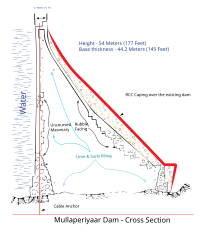 |
NOT SURE ABOUT THE AUTHENTICITY BUT STILL AN INSPIRING ONE
By refusing to take bribes, the Madurai collector has earned 18 transfers in 20 years, a modest house and bank balance and lots of
respect.
Two years ago, as district collector of Namakkal, he voluntarily declared his assets: a bank balance of Rs 7,172 and a house in Madurai
worth Rs 9 lakh. Once, when his baby daughter, Yalini, who had breathing problems, was suddenly taken ill, he did not have the Rs 5,000 needed
for admitting her to a private hospital. At that time he was deputy commissioner (excise) in Coimbatore and there were 650 liquor licences
to be given out. The going bribe for each was rumoured to be Rs 10,000.
Sagayam's masters degrees in social work and law come in useful in his role as an administrator. He knows the rulebooks in detail and is not
afraid of using them, however powerful the opponent. No wonder then that Sagayam's career is marked with the scars of countless battles.
When he was in Kanchipuram as revenue officer, he took on the sand mafia, ordering them to stop dredging sand from the Palar riverbed.
Large-scale dredging had made the area flood-prone. The mafia sent goons to assault Sagayam, but he did not budge and would not take back the
order. He also took on a mighty soft-drink mnc when a consumer showed him a bottle with dirt floating in it. He sealed the bottling unit and
banned the sale of the soft drink in the city. In Chennai, he locked horns with a restaurant chain and recovered four acres valued at some Rs
200 crore.
Sagayam's wife Vimala has stood by him all these years but she was rattled by some of the threats during the elections. "He always says if
you are right, nobody can hurt you," she says. "But sometimes it becomes difficult."
"I believe, as Mahatma Gandhi said, that India lives in her villages," says Sagayam, who also idolises Subhash Chandra Bose. His years as a
collector-he has slept overnight in village schools many times-have convinced him to better the lot of villagers by strengthening the
village administrative officer (VAO) system. Many VAOs have never visited villages and often stay miles away from where they should be, in
cities. In Namakkal, his action against errant VAOs had them ganging up with politicians to get him transferred. Over 5,000 villagers protested,
saying they wouldn't let Sagayam go. The politicians had to retreat.
Sagayam says he learnt honesty on his mother's knees. He is the youngest of four sons of a farmer from Pudukottai. "Our adjoining field had mango
trees and my friends and I would pick the fallen fruit," he says. "But my mother made me throw the mangoes away, saying I should enjoy only
what is mine." Now his daughter Yalini wants to become a collector. When she has an argument with her brother Arun, she asks her father, "Is he
really your son? He just told a lie!" Both of them are proud of their father. Recently, after a long time, the Sagayam family went on a
vacation to Kullu in Himachal Pradesh. While visiting a gurudwara, a stranger came up to their father and asked him, "Aren't you IAS officer
Mr Sagayam?" Yalini and Arun have not stopped beaming.







